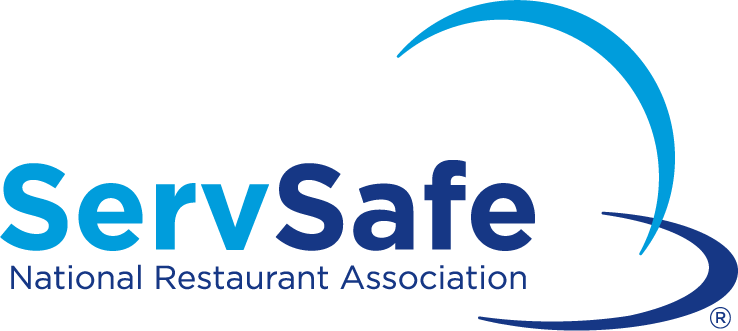BLOG
Alcohol Public Policy Changes and Trends: What Operators Need to Know to Stay Safe

The U.S. has experienced countless public policy changes since the start of the pandemic, many of which have completely reshaped the food and beverage industry. Of all the changes affecting restaurants, bars, and other food and beverage retailers, none have had as big an impact on the industry as shifts in alcohol public policy.
Changes to state and local alcohol policies in the last three years have been the most significant since the end of Prohibition in 1933. And while some of these changes create new opportunities for the industry, many new alcohol policies come with their own set of risks.
In this blog, we’ll discuss key alcohol public policy changes and trends, how these changes affect the industry, and what operators need to know to keep their customers, employees, and businesses safe. Let’s dive into some of the most important alcohol policy changes:
Reducing the Age to Serve
One of the biggest challenges to hit the restaurant industry in recent years has been overcoming staff shortages fueled by pandemic shutdowns.
Many states are now considering or have passed laws lowering the age to serve alcohol. Since 2021, nine states have introduced bills to lower the age to serve alcohol. Alabama, Kentucky, New Mexico, and Ohio have all enacted legislation to lower the age to serve to 18. Michigan lowered the age to 17, while Iowa and West Virginia have lowered it to 16.
Due to the potential liabilities in allowing a younger workforce to serve alcohol, responsible alcohol service and selling training will become even more critical in places where the age to serve is reduced.
Alcohol To-Go
Off-premise alcohol purchasing policies have evolved dramatically over the last few years. During the height of the pandemic, restaurants and bars were struggling to stay afloat as valuable revenue from alcohol sales was abruptly cut off.
In an effort to boost sales and keep small businesses from sinking, food and beverage retailers in many states were temporarily permitted to sell alcohol to-go. It seems this alcohol trend has stuck, and as of this year, 24 states have made alcohol to-go permanent, while another 10 are allowing it on a long-term, but temporary basis.
Alcohol sold to-go or for delivery must be handled with the same due diligence as serving drinks on-premise, including refusing service to underage or visibly intoxicated customers.
Digital IDs
With recent advances in mobile technology, digital IDs are gaining popularity across the U.S and policies around digital identification are now being introduced.

This is simply where the ID is stored in a phone, either on a web application provided by the state or in third-party software, such as Apple Wallet.
While these policies aren’t directly involved with the sale of alcohol, restaurant and bar staff in many states will now be expected to verify digital IDs when serving alcoholic drinks. As such, employees should be trained in how to properly check a digital ID.
Lowering the legal driving BAC limit from .08 to .05
In 2016, the National Transportation Safety Board (NTSB) recommended that states lower their legal driving limits from .08 BAC to .05 BAC. In 2017, Utah became the first, and currently only, state to enact a .05 BAC limit. Since then, 6 other states have introduced legislation to lower the legal limit to .05.
Although this policy has yet to gain widespread traction, establishments should bear in mind that lowering the legal BAC limit to drive means increased risk of overserving customers.
All staff serving alcohol should be properly trained in BAC principles and know how to properly gauge a customer’s BAC.
Increase in Liquor Liability Lawsuits
Over the last few years, there has been a significant increase in the amount of liquor liability lawsuits in the U.S. And the payouts for these types of lawsuits can easily put restaurants and bars out of business.

The jury rendered that a bar in Texas would have to pay $301 billion to the family of two drunk driving victims for overserving a patron that caused the crash. Some of the largest jury awards in the past decade involved establishments that over served or served alcohol to someone underage.
To avoid costly lawsuits, staff serving alcohol should be trained and certified in responsible alcohol service and selling.
New Alcohol Policies Come with New Opportunities–And Risks
While some of these alcohol public policies come with new opportunities for increased drink revenue, all of them come with their own liabilities. So, how can operators address these risks and ensure their staff is up to date with the latest safe responsible alcohol service and selling practices?
One of the best ways restaurant and bar operators can mitigate these risks is by training and certifying staff with ServSafe Alcohol. Now more than ever, operators need to demonstrate that they are making reasonable efforts to prevent alcohol-related incidents in their establishments. Not only does ServSafe Alcohol certification help safeguard restaurants and bars from liability, ServSafe certification creates a safer, more enjoyable environment for both employees and customers. Learn more about ServSafe Alcohol training and certification at www.servsafe.com/ServSafe-Alcohol.
For more information and resources about responsible alcohol serving practices, sign up for our ServSafe Alcohol training program or connect with our team.

